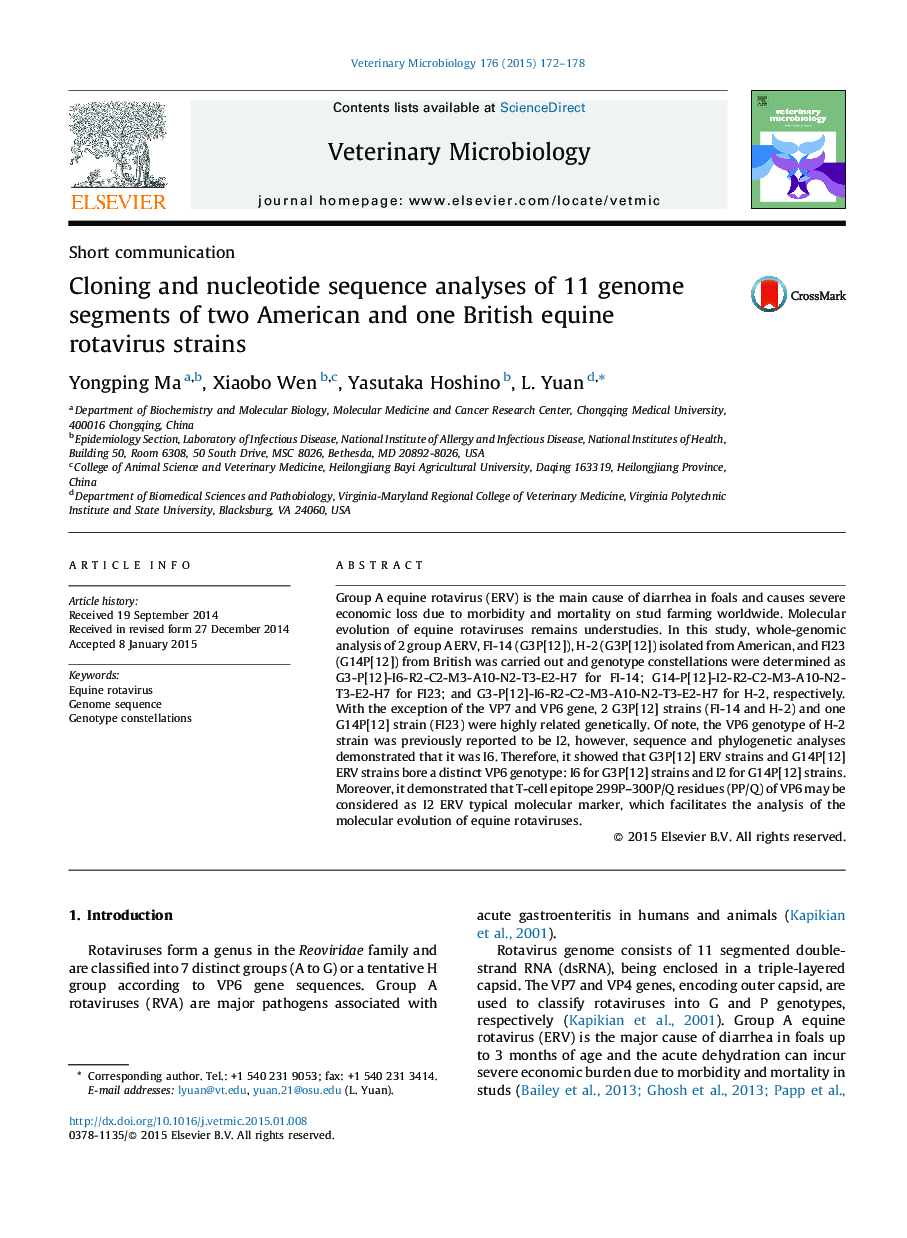| کد مقاله | کد نشریه | سال انتشار | مقاله انگلیسی | نسخه تمام متن |
|---|---|---|---|---|
| 5800128 | 1555353 | 2015 | 7 صفحه PDF | دانلود رایگان |
- The full genome sequences of FI-14, FI23 and H-2 were sequenced and genotyped.
- Identified 299P-300P/Q residues (PP/Q) of VP6 as I2 ERV typical molecular marker.
- PP/Q residues were found in the conserved T-cell epitope of ERV VP6.
Group A equine rotavirus (ERV) is the main cause of diarrhea in foals and causes severe economic loss due to morbidity and mortality on stud farming worldwide. Molecular evolution of equine rotaviruses remains understudies. In this study, whole-genomic analysis of 2 group A ERV, FI-14 (G3P[12]), H-2 (G3P[12]) isolated from American, and FI23 (G14P[12]) from British was carried out and genotype constellations were determined as G3-P[12]-I6-R2-C2-M3-A10-N2-T3-E2-H7 for FI-14; G14-P[12]-I2-R2-C2-M3-A10-N2-T3-E2-H7 for FI23; and G3-P[12]-I6-R2-C2-M3-A10-N2-T3-E2-H7 for H-2, respectively. With the exception of the VP7 and VP6 gene, 2 G3P[12] strains (FI-14 and H-2) and one G14P[12] strain (FI23) were highly related genetically. Of note, the VP6 genotype of H-2 strain was previously reported to be I2, however, sequence and phylogenetic analyses demonstrated that it was I6. Therefore, it showed that G3P[12] ERV strains and G14P[12] ERV strains bore a distinct VP6 genotype: I6 for G3P[12] strains and I2 for G14P[12] strains. Moreover, it demonstrated that T-cell epitope 299P-300P/Q residues (PP/Q) of VP6 may be considered as I2 ERV typical molecular marker, which facilitates the analysis of the molecular evolution of equine rotaviruses.
Journal: Veterinary Microbiology - Volume 176, Issues 1â2, 23 March 2015, Pages 172-178
